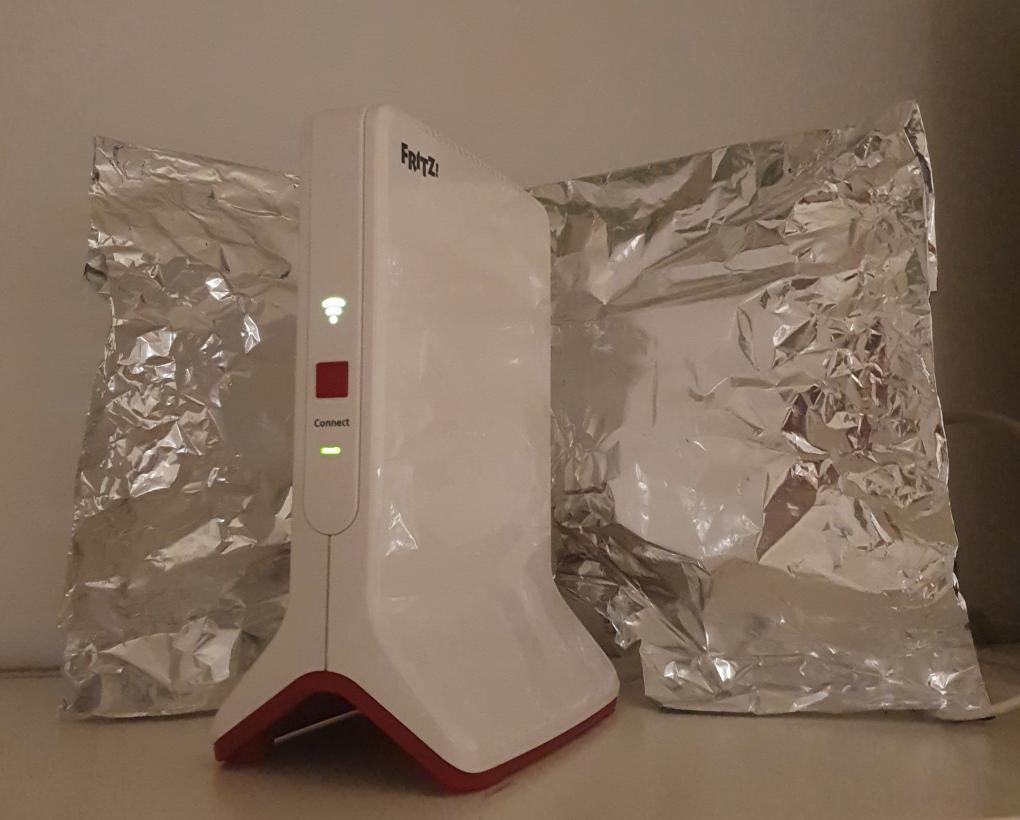
When I’m not in the lab and out in the field, I use tinfoil and shielded bags to reduce the signal strength, to force devices to and from lower frequency bands, to see the impact on data rates, or to increase their power output for testing. But tinfoil does not only block RF signals, it also reflects them. So I recently wondered, if I could use tinfoil to increase the datarate of my Wi-Fi link at home.
And the effect of some tinfoil behind my Fritz Repeater 3000, which communicates with a Fritzbox 7590 around 4 meters away in another room, is quite significant indeed. In the baseline setup, I’m using an 80 MHz 802.11ac (Wi-Fi 5) channel on 5.58 GHz (channel 116), and the repeater is positioned and aligned for maximum throughput. Changing its location or alignment just ever so slightly can already have a significant impact on the sustained throughput, so I was careful to find the best position and then not to touch it anymore while adding or removing the tinfoil behind it.
From the Fritzbox to the repeater, to which my notebook is connected via an Ethernet cable, I could increase the data transfer rate of a single TCP stream generated with iperf3 from 584 Mbit/s over the air to 712 Mbit/s. That’s a whooping 20% extra, and 5 instead 4 GB per minute transferred.
In the other direction, i.e. from my notebook via the repeater to the Fritzbox and the server behind it, the gain was not quite as significant, I got 684 Mbit/s with the tinfoil, compared to 650 Mbit/s without.
Ok, it doesn’t look pretty, but that tinfoil is going to stay!